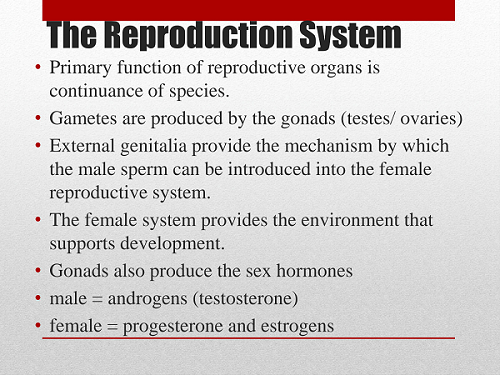Unit 9: The Reproductive System
Unit 9: The Reproductive System

Unit 9: The Reproductive System

Unit 9: The Reproductive System
This unit provides accurate information pertaining to the functions of the male and female reproductive systems and how fertilization occurs. The unit also discusses diseases and disorders that males and females can face. Finally, the unit covers methods and myths of birth control.
The reproductive system is a collection of internal and external organs — in both males and females — that work together for the purpose of procreating, according to the Cleveland Clinic. Due to its vital role in the survival of the species, many scientists argue that the reproductive system is among the most important systems in the entire body.
The male reproductive system consists of two major parts: the testes, where sperm are produced, and the penis, according to Merck Manuals. The penis and urethra belong to both the urinary and reproductive systems in males. The testes are carried in an external pouch known as the scrotum, where they normally remain slightly cooler than body temperature to facilitate sperm production.
The external structures of the female reproductive system include the clitoris, labia minora, labia majora and Bartholin’s glands, according to the Cleveland Clinic. The major internal organs of the female reproductive system include the vagina and uterus — which act as the receptacle for semen — and the ovaries, which produce the female's ova. The vagina is attached to the uterus through the cervix, while the fallopian tubes connect the uterus to the ovaries. In response to hormonal changes, one ovum, or egg — or more in the case of multiple births — is released and sent down the fallopian tube during ovulation. If not fertilized, this egg is eliminated as a result of menstruation.
Unit Focus
- parts and functions of the female reproductive system
- disorders and diseases of the female reproductive system and how to detect them
- parts and functions of the male reproductive system
- disorders and diseases of the male reproductive system and how to detect them
- importance of prenatal care in the health of a developing embryo and fetus
- different methods of birth control
Vocabulary
Lesson Reading
Videos and Interactives (Click on Images to View Content)

